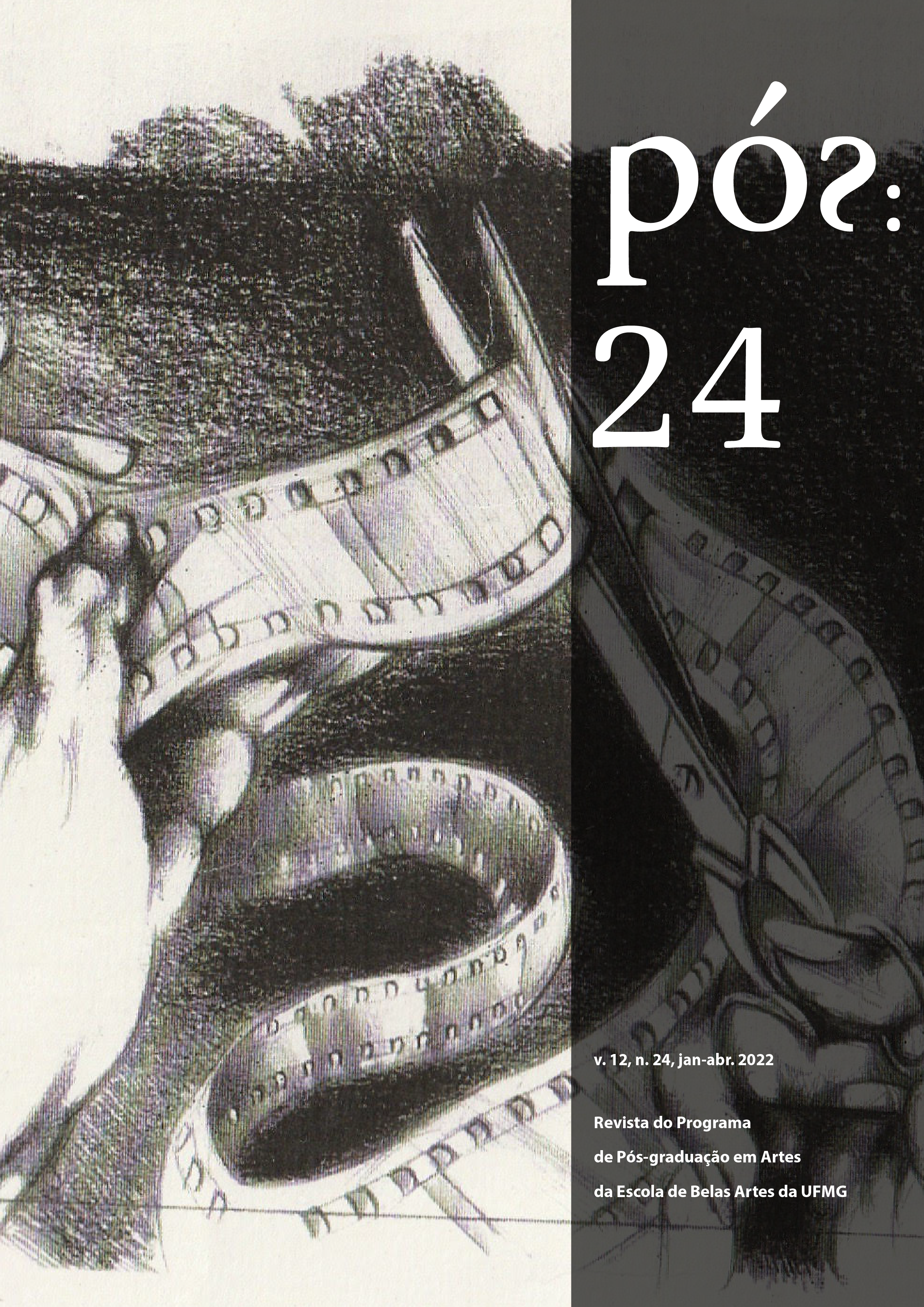The spectrum of sound as a film analysis tool
DOI:
https://doi.org/10.35699/2237-5864.2022.36118Keywords:
iZotope RX, spectral analysis, sound studies, film analysis, SpectrogramAbstract
This article aims to present sound spectral analysis as a consistent visual tool for the creation of new methodological approaches focused on sound analysis. Considering the complexity of the soundtrack, the transposition of sound information to the visual medium makes it possible to study the sound in detail, without losing perspective on the totality of the soundtrack or its relationship with the image. The precision and high degree of detail seem to constitute advantages for this type of analysis, performed with three-dimensional graphics generated by software such as iZotope RX, called spectrograms. Exploring three case studies, the paper seeks to explain how spectral analysis allows the analyst's subjective perceptions to be unambiguously confirmed.
References
ADORNO, Theodore; EISLER, Hanns. Musique de cinéma. Paris: L'Arche, 1972.
ALTMAN, Rick; TATROE, Sandra; JONES, McGraw. Inventing the cinema soundtrack: Hollywood multiplane sound system. In: BUHLER, James; FLYNN, Carol; NEUMEYER, David (ed.). Music and cinema. Hanover: Wesleyan University Press, 2000. p. 339-359.
ALTMAN, Rick. Visual representation as an analytical tool. In: NEUMEYER, David. (ed.). The Oxford handbook of film music studies. New York: Oxford University Press, 2014. p. 73-95.
AUMONT, Jacques; MARIE, Michel. A análise do filme. Lisboa: Texto & Grafia, 2004.
BAUER, Martin; GASKELL, George. Pesquisa qualitativa com texto, imagem e som: um manual prático. Petrópolis: Vozes, 2002.
BORDWELL, David; THOMPSON, Kristin. A arte do cinema: uma introdução. Campinas: Editora Unicamp, 2014.
BROWN, Royal. Overtones and undertones: reading film music. Berkeley: University of California Press, 1994.
CARREIRO, Rodrigo; ALVIM, Luiza. Uma questão de método: notas sobre a análise de som e música no cinema. Matrizes, v. 10, n. 2, p. 175-193, 2016.
CARREIRO, Rodrigo; OPOLSKI, Débora; MEIRELLES, Rodrigo. O som do silêncio: uma análise imersiva. In: ENCONTRO ANUAL DA COMPÓS, 30., 2021, São Paulo. Anais [...]. Campinas: Galoá, 2021.
CHION, Michel. A audiovisão: som e imagem no cinema. Lisboa: Texto & Grafia, 2008.
CRARY, Jonathan. Técnicas do observador. Rio de Janeiro: Contraponto, 2015.
EISENSTEIN, Sergei. O sentido do filme. Rio de Janeiro: Zahar, 2002.
FALCÃO, Filipe. Fronteiras do medo: quando Hollywood refilma o horror japonês. São José dos Pinhais: Estronho, 2015.
GORBMAN, Claudia. Unheard melodies: narrative film music. Londres: BFI Publishing, 1987.
OPOLSKI, Débora. Introdução ao desenho de som: uma sistematização aplicada na análise do longa-metragem Ensaio sobre a cegueira. João Pessoa: Editora UFPB, 2013.
OPOLSKI, Débora. A continuidade nos diálogos do personagem: uma leitura sobre a montagem de imagens e voz a partir de uma sequência do filme Meu nome não é Johnny.Temática,n. 6, 2015.
OPOLSKI, Débora. A fragmentação da performance vocal do personagem no cinema a partir da perspectiva da edição de diálogos.2017. 227 f.Tese (Doutorado em Comunicação e Linguagens) – Universidade Tuiuti do Paraná, Curitiba, 2017.
PENAFRIA, Manuela. Análise de Filmes – conceitos e metodologia(s). In: CONGRESSO SOPCOM, 6., 2009, Coimbra. Anais [...]. Disponível em: <http://www.bocc.ubi.pt/pag/bocc-penafria-analise.pdf>.Acesso em: 21 mar. 2022.
RAMOS, Fernão. Estudos de Cinema na universidade brasileira. Alceu, Rio de Janeiro, v. 20, p. 161-167, 2010.
ROSE, Gillian. Visual methodologies: an introduction to researching with visual materials. Newbury Park: Sage Publications, 2016.
SCHAFER, Murray. Afinação do mundo. São Paulo: Unesp, 2001.
SONTAG, Susan. Against Interpretation. New York: Dell Publishing, 1961.
VANOYE, Frances; GOLIOT-LÉTÉ, Anne. Ensaio sobre a análise fílmica. Campinas: Papirus, 1994.
Downloads
Published
How to Cite
Issue
Section
License
Copyright (c) 2022 Rodrigo Carreiro, Débora Opolski

This work is licensed under a Creative Commons Attribution-NonCommercial 4.0 International License.
Authors who publish in this journal agree to the following terms:
- Authors retain copyright and grant the journal the right of first publication, with the work simultaneously licensed under the a Creative Commons Attribution-NonCommercial 4.0 International License that permits sharing of the work with acknowledgement of authorship and initial publication in this journal;
- Authors are permitted to enter into additional contracts separately, for non-exclusive distribution of the version of the work published in this journal (e.g., the Creative Commons Attribution License).
- Authors are permitted and encouraged to publish and distribute their work online (e.g., in institutional repositories or on their home page) at any point before or during the editorial process, as this may generate productive changes as well as increase the impact and citation of the published work.
- It is the responsibility of the authors to obtain written permission to use in their articles materials protected by copyright law. Revista PÓS is not responsible for copyright breaches made by its contributors.












